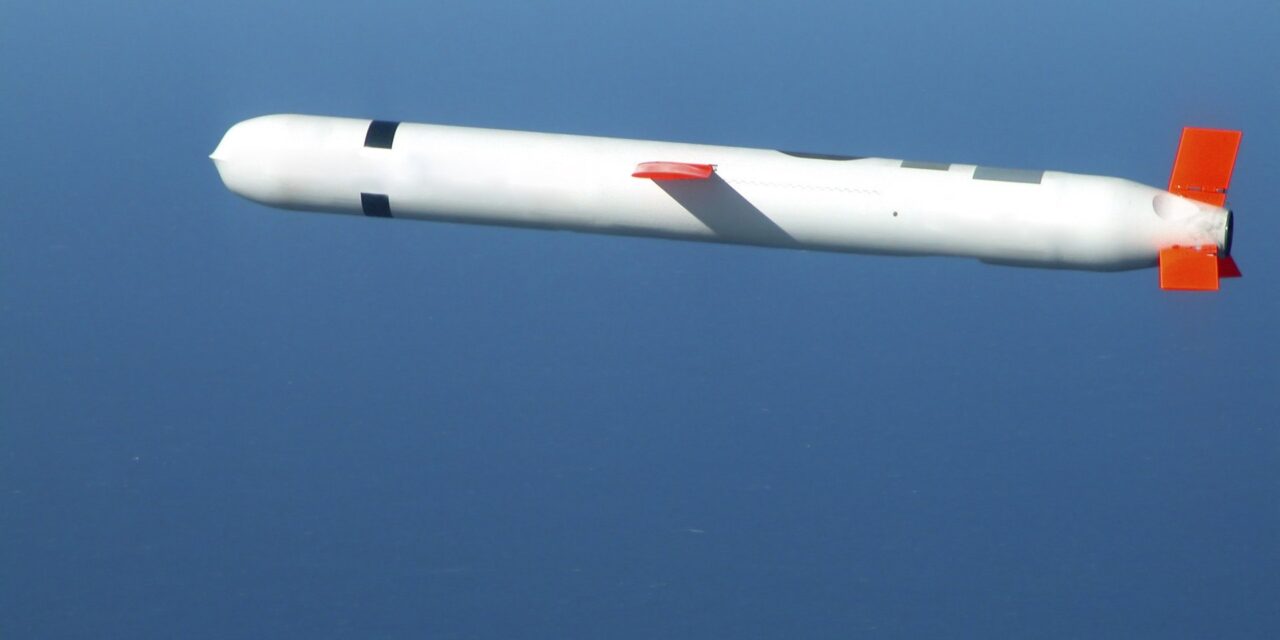Will the US now supply Tomahawk missiles, with a range of 1,600 km (994 miles), to Ukraine?
UPDATE 1852 GMT:
In the latest exchange with Moscow, Ukraine has returned 185 soldiers and 20 civilians held in Russian captivity.
Kyiv freed 185 Russian troops.
Ukraine President Volodymyr Zelensky said the released Ukrainians include soldiers who defended Mariupol during the 12-week Russian assault and siege and spring 2022 and troops captured at the Chernobyl Nuclear Power Plant.
We are bringing home 185 of our defenders from Russian captivity. One hundred eighty-three are enlisted personnel and sergeants, and two are officers. They are warriors of the Armed Forces, the National Guard, and the State Border Guard Service. Alongside our defenders, civilians… pic.twitter.com/LsRN3O4T0q
— Volodymyr Zelenskyy / Володимир Зеленський (@ZelenskyyUa) October 2, 2025
UPDATE 1839 GMT:
Vladimir Putin has threatened strikes on Ukrainian nuclear power plants.
Putin issued his threat on Thursday at the Valdai International Discussion Club in Sochi in southern Russia. He spoke as power was cut off for a ninth day to the Russian-occupied Zaporizhzhia Nuclear Power Plant, Europe’s largest with six reactors, because of electricity lines damaged by Moscow’s shelling (see 0544 GMT).
Putin framed the threat as a “mirror response”, claiming without evidence that it is Ukraine who has been attacking near the Zaporizhzhia plant.
[People in free Ukraine] need to understand that if they keep playing with this dangerously, they still have operating nuclear power plants on their side. So what is stopping us from responding in kind? They should think about that.
Ukraine Foreign Minister Andrii Sybiha posted:
Russia deliberately cut power to the Zaporizhzhia Nuclear Power Plant. This was a manual disconnection carried out as a test while Russia is preparing to reconnect the occupied Zaporizhzhia NPP to its own power grid.
Russia’s next step will be even more dangerous: restarting a…
— Andrii Sybiha (@andrii_sybiha) October 2, 2025
UPDATE 0946 GMT:
Ukraine President Volodymyr Zelensky has told the European Political Community summit, “We are all now in a new reality, and everyone, I think, understands it, even those who may not want to admit it.”
Citing Russia’s drone incursion into Poland and fighter jet violation of Estonia’s airspace, he noted, “If the Russians dare to launch drones against Poland or violate the airspace of northern European countries, it means this can happen anywhere – in western Europe, in the south – and we need fast and effective response.”
He urged quick adoption of the European Union’s 19th package of sanctions against Russia, with “support [of] President Trump’s call to stop buying Russian oil here, here in Europe”.
Congratulating Moldova over the outcome of its Parliamentary election, in which President Maia Sandu’s party won a majority, he called on leader to Chapter One talks about Moldova and Ukraine’s accession to the European Union (see 0602 GMT).
In her address, Sandu list the multiple dimensions of Russia’s interference — including disinformation, misinformation, and attempted corruption — “to capture Moldova through this elections, or at least to destabilize the country and…to discredit the results”.
She summarized, “We hope that our experience is going to encourage other countries because a small and fragile democracy, like the Moldovan one, has resisted the big resources of Russia. And if Moldova could do it, then everybody can do it.”
I had a meeting with President of Moldova @sandumaiamd. The main topic was our shared path toward the European Union. It is important to find ways to ensure the simultaneous opening of the first cluster for our countries. We also discussed the development of trade and economic… pic.twitter.com/s52FIoqpTc
— Volodymyr Zelenskyy / Володимир Зеленський (@ZelenskyyUa) October 2, 2025
UPDATE 0940 GMT:
Opening the European Political Community summit in Copenhagen, Danish Prime Minister Mette Frederiksen has said:
For the last few months, there has been much talk about peace in Ukraine, with meetings, pre-meetings and briefings about the meetings, and meanwhile, Russia continues its brutal attacks.
It must be clear to everyone now: Russia will not stop until they are forced to do so.
Flanked by European Council President António Costa and Ukraine President Volodymyr Zelensky, she said, “We have one major task ahead of us: we have to make our common Europe so strong that war against us becomes unthinkable, and we have to do it now.”
I know that for some of you, the threat from Russia is very clear and very present. For others, it still seems further away, but none of us can no longer be naive.
The war was never just about Ukraine. It is about Europe, all our nations, all our citizens, our values and our freedom.
UPDATE 0742 GMT:
The European Union failed to reach consensus on Wednesday on a proposed €140 billion ($164.5 billion) “reparations loan” to Ukraine, drawn from frozen Russian assets.
At the Copenhagen defense and security summit, Belgium refused to lift its opposition and France and Luxembourg expressed concern over the legal implications.
Other EU leaders said they are willing to accept the general principle, but the European Commission needs to investigate further the legal and fiscal issues, said three officials.
The officials said it is very unlikely the Commission will present a formal legal proposal to EU leaders when they meet in three weeks’ time in Brussels.
With Belgium benefiting from tax revenues on the Russian assets, collected by its financial institution Euroclear, Prime Minister Bart De Wever said the EU must “mutualise” risk and provide more protection should Moscow take legal action.
“We have to flesh out the full proposal much more,” European Commission President Ursula von der Leyen told reporters. “It is absolutely clear that…the risk has to be put on all our shoulders.”
UPDATE 0723 GMT:
At least four civilians have been killed and 25 injured by Russian attacks across Ukraine over the past day.
Air defenses downed 53 of 86 drones. The other 31 struck six locations.
In the Kharkiv region in the northeast, one person was slain and 15 wounded amid a missile strike (see 0608 GMT).
In the Kherson region in the south, two civilians were murdered and four injured as Russian attacks targeted critical and social infrastructure, damaging an apartment building and 10 houses.
Casualties were also reported in the Odesa, Smy, and Zaporizhzhia regions.
Ukraine’s Deputy PM Oleksiy Kuleba says Russia attacked an @Ukrzaliznytsia train depot in Odesa. This is merely the latest of many attacks targeting railway infrastructure in an effort to disrupt passenger, freight and military transport, and strain Ukraine’s wartime economy.… pic.twitter.com/GU3f4zoz6M
— Christopher Miller (@ChristopherJM) October 2, 2025
UPDATE 0716 GMT:
The Russian energy outlet Seala says oil refineries were facing a 38% decrease in their primary capacity as of last Sunday, largely because of Ukrainian drone strikes.
Seala estimated that Russia’s total available capacity for gasoline and diesel fuel production fell by 6% in August and another 18% in September, reaching historic lows.
UPDATE 0608 GMT:
At least one civilian has been murdered and 15 injured, including a 4-year-old child, by a Russian missile strike on the Kharkiv region in northeast Ukraine.
The missile hit the center of Balakliia around 7:05 p.m. in a residential area next to a five-story apartment building.
UPDATE 0602 GMT:
After the European Union’s defense and security summit in Copenhagen on Wednesday, Ukraine President Volodymyr Zelensky cited progress in candidacy for EU membership.
Zelensky said Kyiv has finished its internal screening process for EU legislation and is “fully ready to open Cluster 1” in membership talks.
The President also called for European support for the candidacy of Ukraine’s neighbor Moldova.
“Europe has to keep its promises – just as candidate countries do their part. Thank you, and we are counting on results,” he said.
Ukraine has finished its internal screening process for EU legislation – and we did it faster than anyone else before us. We did it well. We are fully ready to open Cluster 1 in the EU membership talks – the “Fundamentals” cluster. We need real progress on this. pic.twitter.com/UXjlC70WGe
— Volodymyr Zelenskyy / Володимир Зеленський (@ZelenskyyUa) October 1, 2025
UPDATE 0544 GMT:
A Russian attack on an energy facility on Wednesday blacked out the Chernobyl Nuclear Power Plant in northern Ukraine, the site of the world’s worst radiation disaster in April 1986.
The Russians struck a substation in Slavutych, a satellite town built to house evacuated plant personnel following the disaster. Power was cut to the town and parts of the Chernihiv region.
The Ukraine Energy Ministry reported an “emergency situation” at several facilities within the Chernobyl plant. The “New Safe Confinement”, which isolates the destroyed 4th reactor and prevents the release of radioactive materials, was without power for more than three hours.
Ukraine President Volodymyr Zelensky noted:
The Russians could not have been unaware that a strike on the facilities in Slavutych would have such consequences for Chornobyl. And it was a deliberate strike, in which they used more than 20 drones — according to preliminary estimates.
Meanwhile, the outage at the Russian-occupied Zaporizhzhia Nuclear Power Plant in southern Ukraine is in a 9th day, following Russia shelling that damaged power lines.
The plant is Europe’s largest with six reactors. Backup diesel generators are in operation for cooling and safety, but the International Atomic Energy Agency says the situation may not be tenable.
Zelensky, who has warned of a “critical” situation, posted:
The Russians are doing absolutely nothing to rectify the situation or allow Ukrainian specialists to restore external power to the ZNPP, which should normally operate continuously.
Russia is intentionally creating a risk of radiological incidents, taking advantage, unfortunately, of the weak stance of the IAEA and Director General Rafael Grossi, as well as the dispersed global attention.
ORIGINAL ENTRY: The US will begin provision of intelligence to Ukraine supporting long-range missile strikes on Russia’s energy infrastructure.
Officials told the Wall Street Journal that Donald Trump has authorized the Pentagon and intelligence agencies to aid Ukraine. The US is urging NATO allies to expand similar cooperation.
The sources said the intelligence will allow Ukraine to target “refineries, pipelines, power stations, and other infrastructure far from its borders”, further weakening Russia’s economy.
They noted that the Administration is still considering the delivery of Tomahawk and Barracuda missiles. “We are awaiting written guidance from the White House before sharing the necessary intelligence,” one official said.
The Tomahawks have a precision-strike range of up to 1,600 km (994 miles). The Barracuda’s range, from 110 to 926 km, depends on the version and whether it is launched from the air or from sea.

